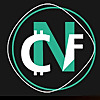ARTICLE AD BOX

- Hedera’s platform enables the tokenization of real-world assets like stocks and real estate.
- The Hedera Token Service and Consensus Service provide secure and scalable infrastructure for asset tokenization.
Hedera Hashgraph is advancing real-world asset tokenization through its efficient tools and native cryptocurrency, HBAR. It provides easy and efficient ways for businesses and developers to create and manage tokenized assets in the market. According to a Hedera blog, the Hedera Token Service (HTS) allows for the simple creation and management of tokens on the Hedera network.
It ensures regulation by implementing Know Your Customer (KYC) and Anti-Money Laundering (AML) measures on-chain. The Hedera Consensus Service (HCS) increases trust through the guarantee of transaction history immutability. When it comes to timestamped logs, they help the stakeholders to be informed and this removes ambiguity, increases accountability.
Comprehensive Asset Tokenization Studio
Hedera’s Asset Tokenization Studio offers a one-stop solution for creating and managing tokenized assets. For the regulated bonds and equities, the studio stores all asset information on the blockchain. It enables issuers to set up parameters such as Dividends, Bond Coupons, and Compliance in accordance with the jurisdiction.
Unlike other systems that have off-chain processes, Hedera reduces the risks through on-chain processes. It also guarantees data integrity and yet at the same time, it is efficient for use by enterprises and startups.
Tokenization on Hedera provides several advantages. These are expected and relatively affordable, with low fees that are paid in HBAR, making the operations cheap. For instance, token transfer fees stand at $0.0001, making the platform scalable.
Hedera provides enterprises with the tools for compliance and for logging data clearly and transparently. These features provide secure operations and trustworthiness necessary to the real estate and commodities industries, for instance.
Some of the companies which are using Hedera include Diamond Standard and RedSwan CRE to chart their respective industries. Diamond Standard tokenizes diamonds, which opens a new type of asset. RedSwan CRE leverages Hedera to segment commercial real estate into tokens, thus opening up the market for property investments.
How Did HBAR Do in 2024?
In 2023, Hedera’s market capitalization on Coinbase was $1.6 billion. By the end of 2024, this figure had risen to $12 billion, which was higher than better-known tokens such as Polkadot, Uniswap and Aave.
However, 2024 wasn’t without challenges.
Hedera’s price also corrected in April due to rumors linking the company with BlackRock. The rumors had pushed the price to $0.10 before it quickly dropped to $0.03. The token’s price did not change much until November but then started to recover.
Several notable trends are currently in place to support HBAR’s future growth. For instance, the Nairobi Securities Exchange signed up with the Hedera Council to fast-track tokenization in Kenya’s capital markets by October 2024. Moreover, industry leaders such as EQTY Lab, Intel, and NVIDIA introduced Verifiable Compute based on the Hedera Consensus Service to increase the credibility of the AI industry.
How Strong Will HBAR Be in 2025?
There has also been a continued increase in institutional attention to both Hedera and HBAR. If the SEC’s plans to tokenize supply chains happen to take off, Hedera is well-placed as a leading platform. The possibility of the HBAR ETF in 2025 also supports the token’s prospects.
HBAR entered the top 20 digital assets by market cap in 2024 and may break into the top 10 by the end of 2025. Market analysts like HBAR Bull or David from Sin City Crypto remain strong for HBAR, suggesting a price target of $1 by 2025.
.png)
 6 hours ago
8
6 hours ago
8








 English (US)
English (US)